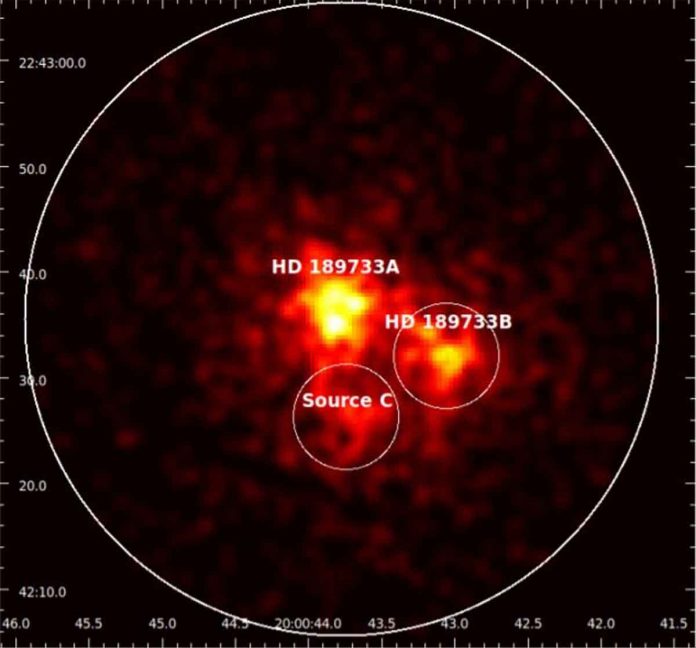Astronomers observed a binary system known as HD 189733. They have used ESA’s XMM-Newton satellite. The study has been published in arXiv.org. The study delivers information regarding the peculiar X-ray variability of this binary.
It is located 63 light years away from the Earth. HD 189733 is a wide binary composed of a K1-type star and a M-type star. The primary and secondary stars have masses of about 0.8 and 0.2 solar masses. The orbital period of the system is estimated to be 3,200 years. HD 189733 A hosts an inflated and actively evaporating hot Jupiter exoplanet on 2.2-day orbit.
Scientists have studied stellar X-ray spectra and their time variability. The form of flares is essential in order to better understand the formation and evolution of binary systems. Palermo Astronomical Observatory in Italy astronomers have analyzed XMM-Newton observations which spans almost eight years with the aim of investigating the X-ray emission of HD 189733 A.
HD 189733 A was 423,600 seconds in the flaring state out of the whole exposure time. The whole exposure time was approximately 958,000 seconds. The number of flares observed around the phases of the planetary eclipses is not statistically different from the number of flares during transit phases. They noted that there is a hint that flares at the secondary transits were more energetic. Four bright flares of HD 189733 B have been identified in the XMM-Newton data.
Research found that bright flares of HD 189733 B have been identified in the XMM-Newton data. The temperature of this star rises to about 0.9 keV, during flares. During the most energetic flaring events, the corona remained relatively cold.
They found that the variability of HD 189733 A in X-rays is totally different from the variability observed in the optical band. They tried to explain this difference. Scientists assumed that it could be related with the angular momentum transfer from the exoplanet to its host star.

